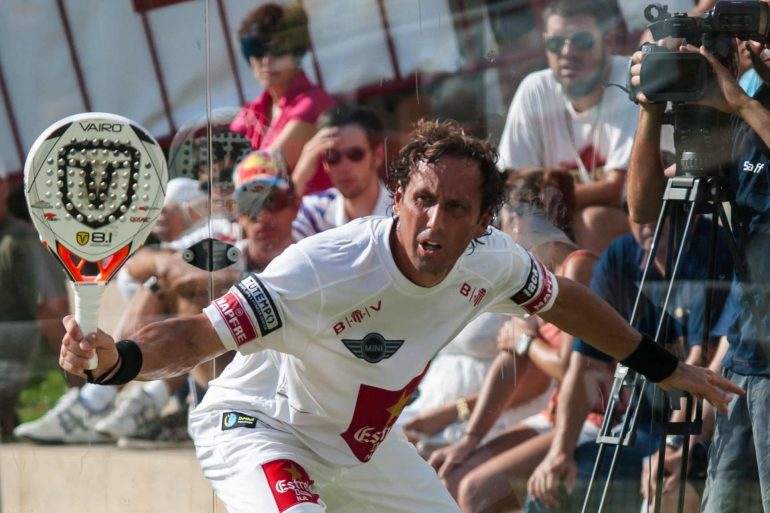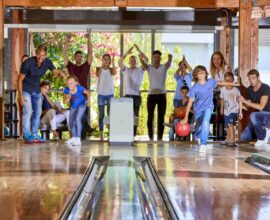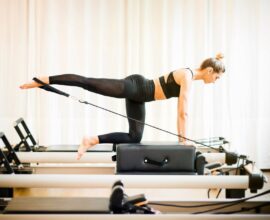Padel: 10 rules to win a match
The tips to improve your technique and strategies to win padel games
Good technical preparation is not enough to win a padel match, as it requires also the ability to anticipate opponents shots, develop a smart game strategy and, of course, a pinch of luck too.
Originated in Mexico in the late 1960s, over the years padel (also known as paddle tennis, padel tennis or, more simply, paddle) has managed to gain more and more popularity, even outclassing other much loved racket sports such as squash and tennis, especially due to its greater accessibility to people of different ages and levels of physical preparation.
First of all, the rules of padel are relatively easy to learn and the game court, smaller than tennis ones (according to what established the Italian Padel Federation, it must have a rectangular shape and measure 10 meters in width and 20 meters in length, with a toleranc eof 0.5%), makes it physically less tiring to play, enabling player sto enjoy longer and more entertaining matches, made of three fast and action-packed sets, with exciting rallies and spectacular shots that keep spectators in awe.
On the other hand, it’s a rather social sport played mainly in doubles (two couples facing each other), which therefore provides an excellent opportunity to socialize and make new friends, or simply to have fun with your friends, with the advantage of keeping fit at the same time. In fact, the benefits of padel range from improving coordination, agility, elasticity and reflexes, to increasing strength and muscle tone, strengthening the immune system, controlling stress, anxiety and mood disorders.
Furthermore ,the dynamic and unpredictable nature of this sport, halfway between tennis and squash, requires the ability to develop proper concentration as well as to respond promptly to opponents shots, moving in harmony with your teammate and effectively cope with stimuli coming from the environment, such as wind, rain or lighting, which is why often players prefer to compete on indoor courts, especially as beginners.
The good news is that all these skills can be developed with the regular practice of this sporting discipline full of adrenaline: winning a padel match becomes increasingly easier as you become familiar with the racket and the rules of the game, especially in combination with good training program and refinement of thoughtful and intelligent game strategies.
So, here is a detailed guide about the 10 fundamental rules to play and win a padel match.
A 10 rules guide to win a padel match
Paddle is an adrenaline-filled, fun and engaging sport, but often playing a match doesn’t mean winning it, especially if you are just a beginner or if you approach this discipline without a good spirit of competition.
To be successful in padel it is necessary to develop a good knowledge of the basic rules of the game, but also and especially to learn training communication with your teammate, practicing a lot and planning training sessions based on the objectives you want to achieve.
Here are 10 simple but effective tips for winning a paddle game. Anyway, let’s first get acquainted with the rules of the game.
Getting acquainted with the basic rules of padel
Having a good knowledge of the basic padel rules is the first, key step to win a game. While many rules are pretty similar to those used for tennis, there are still some specific differences anyway. Some of the basic elements of padel are:
- Starting Point: the match begins with a serve made from behind the service line, which must cross the net and bounce into the opponent’s court; the serve is performed diagonally, from bottom to top, and th eball must bounce on the floor before being hit again, so similarly to what happens for tennis;
- Wall bounces: one of the specific features of Padel is that the ball can bounce off the side walls and fence before being returned, adding another tactical dimension to the game, as players can exploit wall sto hit angled and unpredictable shots;
- Point scoring: in padel one point is scored every time the ball touches the walls of the opponent’s field or it bounces twice on the floor; or when it bounces on the opponent’s field, going beyond the limits of the area of play and hits an extra-game object;
- Three-set game: padel matches are usually played at the best of three sets, so in order to win the game the pair of players must reach six games, with a margin of at least two games;
- Tie-Break: if a set reaches a score of 6-6, to determine the winner of the set it’s time to play a tie-break; it takes place until a pair reaches at least seven points, with a margin of at least two points.
Now you’re ready to discover the flawless 10 rules to win padel matches:
1. Learn to communicate with your playing partner
Even before taking to the pitch, it’s essential to learn to find a feeling with your playing partner and establish clear and precise communication rules, which will then be key for coordinating actions and movements during a match and making tactical decisions more quickly and effectively. On the game, it is also important to keep constantly updated on the opponent’s movements, on the strategies to adopt and on any weakness to exploit.
To improve all these aspects, is very usefult ocheck and observe the recording of gaming sessions, paying attention especially to the methods and timing in which decisions are made. On this concrete basis, it will be possible to discuss with the partner which improvement is needed and how to implement game style changes.
The analysis can then be accompanied by the performance of specific exercises to improve coordination on the field, such as practicing synchronized movements or changing positions during the exchange of balls.
2. Find the right positioning on the field
Finding the right position on the court can really make the difference for a victory, allowing players to maximize the effectiveness of their shots and reduce the possibility of making mistakes.
In particular, it is key that one of the players stays closer to the net, taking an aggressive position to attack the ball and finish the point with a smash shot. The other player should stay slightly further back, covering the court and preparing to respond to opponents’ shots.
To decide who is playing in front and who is staying behind, there are several factor to take into consideration. Firstly, the innate qualities of the individual members of the team (for example, players who are skilled at net play and executing smash shots, are suited to play as forwards in front of the net, while players with a good defensive ability and precision in ground strokes perform more effectively by staying behind the team mate).
In addition, it must be considered the previous experience and the specific game situation (for example, during a serve, it is common that the player serving positions himself near the net to be ready to execute a smash shot), which is why it often happens that the two players exchange positions several times during the same match.
3. Train your concentration ability
Once a good connection with your partner has been established, it is very important to train the ability to stay focused on the game, in order to avoid mistakes and maximize opportunities for success.
Taking away distractions is essential, both external, like noises or whistles from the audience, changes in light or wind, as well as internal, such as intrusive thoughts or worries. On the other hand, forcing yourself to just focus your gaze on the ball helps to maintain calm and clarity even in the most critical moments of the match, being aware of what’s going on in the game and react promptly by adapting the best moves and tactical solutions to specific circumstances, even in the case of unexpected events.
This ability to concentrate can be trained both on and off the pitch, through breathing, mindfulness and selective attention exercises, even combined with visualization techniques.
4. Learn to handle emotions
Even when things go wrong, the most important thing is being able to keep calm and knowing how to best handle your emotions, a crucial skill to avoid letting yourself be overcome by panic or frustration and make things even worse, or definitively compromise the whole match. Especially in padel, every move can change the course of a match, so it is essential to stay focused on the ball until the end and keep fighting for every point.
Th emost appropriate strategy for maintaining calm refers to the adoption of a positive mindset. This means trying to focus on your strengths, leverage them and have faith in your own abilities; a practice that can be even enforced by the repetition of positive and powerful affirmations if necessary, such as “I can do it”.
5. Pick the best racket for you
Choosing the best racket for your game style and technique significantly influence your performance and ability to win a padel match. For example, a racket that offers a large contact area and a balanced weight distribution enables players to hit the ball with greater precision, while a stiffer and heavier racket can generate greater speed and power in shots, a good choice for a more aggressive game style.
When it comes to pick the right equipment, it is important to consider both the playing style and individual experience, but also the quality of the materials used (a well-balanced racket made with high-quality materials can improve the power of your shots).
Other relevant variables to keep in mind are the weight of the racket (that is, lighter rackets are easier to handle, but their shots are less powerful than the one produced by heavier rackets) and the shape of the head (more specifically, teardrop-shaped rackets guarantee more control and greater precision in shots, while round rackets mainly go for power plays).
6. Use a wide variety of shots
Including a wide range of different styles of shots in your padel strategy, for example powerful ones performed with the strength of the whole arm or the more delicate and precise ones performed with writs plays, can put pressure, confuse, and even neutralize opponent’s move sets, making it difficult to return the ball.
Furthermore, playing and mastering a variety of different shots can force opponents to retreat from the net, thus taking more control of the game and making it easier to score points.
7. Use the walls of the pitch to your advantage
Likewise, it is important to learn how to best use the walls of the court in a strategic way (this is why it is said that walls in padel are not only a limit, but also and especially an opportunity).
A good way to exploit the walls regards the possibility to leverage bounces off the side wall and then off the back wall, creating such a difficult angle to handle for the opponent. Another very useful tip is to exploit the walls when you are under pressure, and in need to gain more time and get back to your best position on the court.
8. Find the right balance between attack and defense
Finding the right balance between attack and defense is essential to win a padel match. A good game strategy highlights the relevance of the ability to take the initiative, when the opportunity comes, to put your opponents under pressure and gain control of the point. On the other hand, it is also important to be ready to defend yourself when necessary, trying to remain concentrated especially on prolonged exchanges.
Therefore, is key to learn to switch from attack to defense and vice versa very quickly, in order to adapt to different game situations approaching the best tactical solutions to achieve success in every match.
9. Be aware of your strengths and weaknesses
After each match, it is essential to take some time to analyze your own performances, assess what worked well (your strengths, which will be enhanced) and what, instead, can be improved next time (the weaknesses, which you will have to keep working on). This will allow you to learn from mistakes and turn into a better player, constantly bringing your performance on the pitch to the next level.
It can also be useful to evaluate how you behave in front of different opponents, and learn to study and understand their strategies in advance to build a personalized game strategy.
10. Attend lessons from qualified instructors
Last but not least, an excellent way to start winning in the game of padel, or even just to improve and overcome your personal limits, is about taking lessons from a qualified instructor with the right ability to identify the areas on which it is needed to work on and develop a personalized training plan aiming to help you achieve your own individual performance goals as a padel player.
Padel lessons from the champion Bebe Hernan Auguste: the stunning experience at the ForteVillage Padel Academy
Always renowned for the quality of its sports facilities, the luxurious five-star resort ForteVillage, located in the heart of South Sardinia just a few steps from the enchanting Santa Margherita di Pula, confirms itself as a point of reference for padel, thanks to the innovative Padel Academy, a real school for this sport that every year hosts some of the greatest legends of this discipline, including multiple world champions like Bebe Hernan Auguste.
In the week between July 13 and 21, 2024, the Spanish champion, number one in the international rankings four consecutive times from 1997 to 2000, will be available to anyone who wishes to receive personalized padel training, including valuable advice on how to improve your shots and refine your game strategy, with the exciting opportunity to train with one of the greatest professionals of this fascinating sport.
For further information or to book an individual or group lesson at the Padel Academy with Bebe Hernan Auguste, please call to +39 070 9218818 or write an email to holiday@fortevillage.com
Do you want to discover the rules and secrets of Padel and experience a dream holiday in a true paradise? Discover Forte Village Resort in Sardinia






